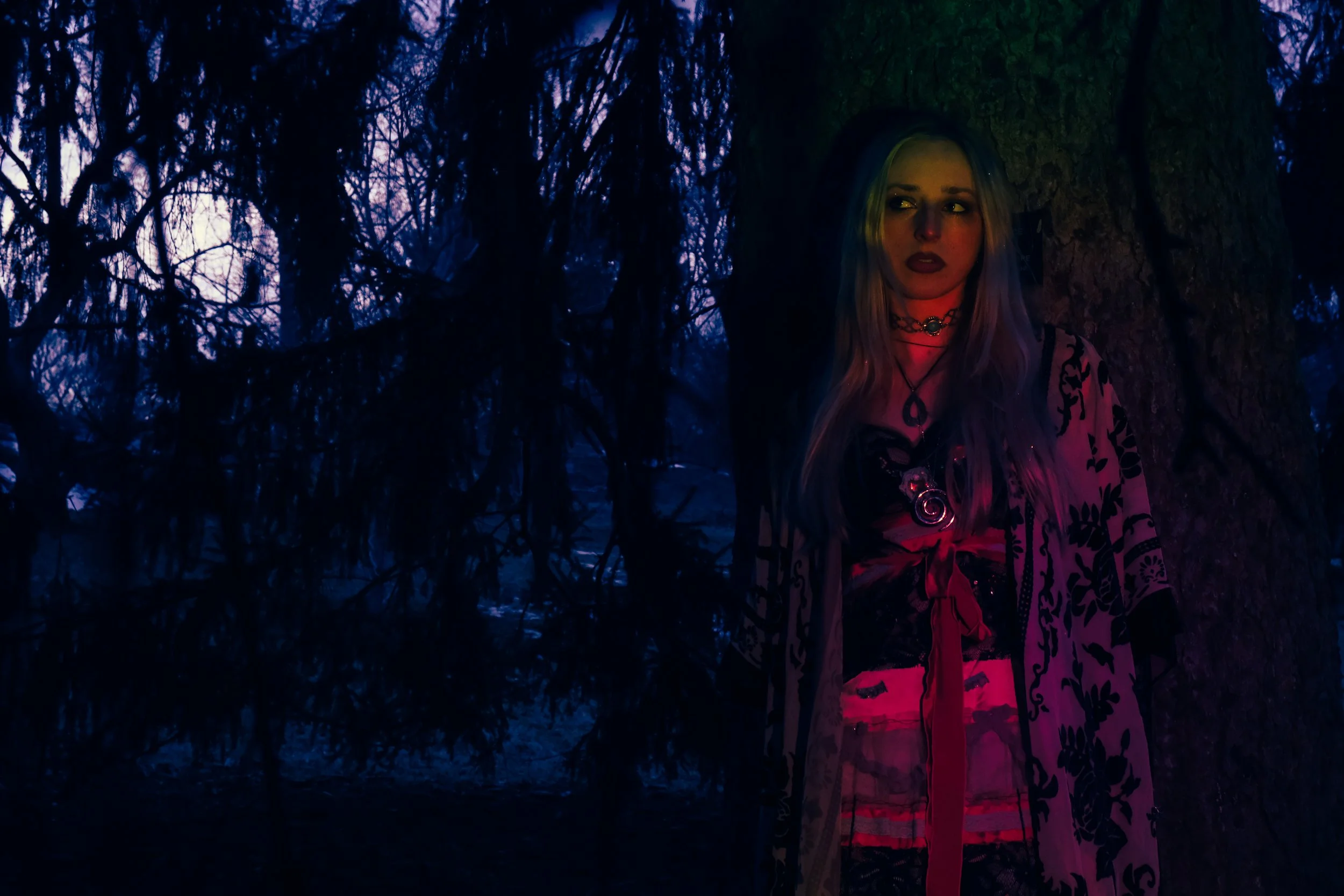The Way of a Disillusioned Girl
The Way of a Disillusioned Girl
Written by Maya Klaus
Photographed by Zahara Trent
I met Jack Kerouac and Dean Moriarty last summer. It was my third week of being a bank teller in Waukesha, Wisconsin. First Federal Bank of Wisconsin was my mighty employer and I their ever-faithful employee.
Each new workday began with the rising sun. I caught glimpses of it on my drive to work and when I worked the drive-thru I welcomed it in its entirety. Otherwise I looked out no windows the rest of my workday. I tapped the keys of a gray keyboard. I ate plain yogurt on my 30-minute lunches in the dull break room. I yawned from boredom.
When I started reading the words of Jack Kerouac between customers—so fairly often, as mobile banking exists, and the only people coming in to see your lonesome bank tellers are dying off—I developed a rather persistent itch.
I finished On the Road by Jack Kerouac quickly, thinking I’d rid myself of itchiness. I didn’t. The road—and all that Kerouac made it out to be—stayed with me. I got the idea that my faith could find a purpose out on the open road. Jack's madness followed Dean out to San Francisco, back east, and down to Mexico. You get it now, don’t you? Faith without work(s) is dead. With one’s life so sullen, like the life of one stuck in a bank teller booth, one follows the mad out to wide open pastures, the seclusion offers them the prize of time. Time allows for faith to be defined.
It is a profound illuminating mystery all in itself, when a person realizes his ability to go deep into his own being, to see himself from the inside, to delight in self-knowledge, and to be moved even to tears over his own fallen and spoilt will, (The Way of the Pilgrim).
Through his stories, Jack gave me an answer to my persistent itch: a pilgrimage. Jack will have the road. And for me? Well David Soaud, a customer at the bank and a perfectly mad man from West Virginia who came out to the Midwest to work long days doing laborious blue-collar work and whom I met during my first read of Kerouac’s seminal work, gave me the answer: A journey to his grave.
First, I found out when and how he died. The old man died on Oct. 21st, 1969, of an enormous abdominal hemorrhage caused by his heavy drinking. His Wikipedia noted he was from Lowell, Massachusetts, and was buried there in Edson Cemetery. One year left at school in Boston, and all I am sure about is the itch under my skin, not a steady job, or a promising income. I’m inching closer to the beginning of Jack Kerouac, the man born on March 12th, 1922. I am on my way now to meet him once again. I’m taking the commuter rail. I am bringing a friend, a beer for Jack and I to share, and a hope for Jack’s grave to charm me with seclusion.
***
March 1: I walked from the Lowell train station, off of Thorndike St., to Edson Cemetery. After having ridden on a shuttle bus from Boston to Anderson/Woburn, and then hopping on the train to Lowell, the walk was about an hour. I trudged along rather hurriedly to warm my body up. The wind blows strong in the East this time of year. The winds blew gloom and a chance of rain over my head. Knowing the sooner I got to his grave the sooner I could crack open one of the three beers I carried, clanging along with me in my backpack, made the chance of rain no longer matter as I’d be feeling warm for a different reason. Anyways, it didn’t rain. Fate didn't have it that way: fate brought the sun out as I searched for his grave. Kismet. Fate left a bottle opener atop his grave for me too.
Standing in front of his grave, sipping my beer, I reread the words “The Road is Life,” inscribed in his headstone. A grave where madness came to rest, on a random plot of soil, surrounded by what felt like miles of graves. Left behind on his grave you’ll find a pair of traveled-in Converse, so many pens and pencils, beer bottles, photos and letters addressed to the old man. Many rocks from fellow pilgrims were placed on top of the grave. As a man who was everywhere but home, it makes it a bit difficult to say you could feel his spirit there, lingering, so I’m not going to say I did. Yet, you feel the presence of so many others because of the life, or the grave goods, left behind.
On the walk back, after downing two Sierra Nevada Pale Ales—a sessionable choice, I have heard—my gut told me to buy my first ever scratch-off. I entered a shop, plastered with signs stating they sold it all: alcohol, party decor, cigarettes and a doggy daycare service. I asked the woman behind the counter for a $5 scratch-off. Crossed the street over to a Dunkin’, I bought a small black coffee, paid, and right after I was handed the steaming cup, the lights turned off. Matter of fact, everything turns off on this block, 15 minutes down from Kerouac’s grave. I know because I won big on this scratch-off, $20 and went back over to cash it with no luck. The system was down.
You gotta go out and trust the gut. We all got one in ourselves. Like Jack you find yourself out on the road constantly, like me, you venture out to Lowell, spend time with some man whose words you have read fondly, and win $20. What gets me down is I was stuck in a bank busy counting money—so much money that if I took it all, I would have been saved. However, a journey to Jack’s grave and twenty bucks gave me a teensy taste of what the road may provide me. I have faith in the road. I cemented faith as I pilgrimaged to the grave of a drunkard who defined an entire generation decades before me.
I left a note with him: I hope to write a book so good, it defines an entire generation like you did, Jack Kerouac. He wrote for the disillusioned. He was comfortable in letting chance drive his works, as he let the road inspire him. I, a disillusioned girl, hope to walk my own way too.




